😊
😊
Holiday Lights from the Universe
Although there are no seasons in space, some cosmic vistas invoke thoughts of a frosty winter landscape. Here are a few stellar images of holiday wonderlands from across the galaxy…

Located in our galaxy about 5,500 light years from Earth, this region is actually a “cluster of clusters,” containing at least three clusters of young stars, including many hot, massive, luminous stars.

The outstretched “wings” of this nebula looks like a soaring, celestial snow angel. Twin lobes of super-hot gas, glowing blue in this image, stretch outward from the central star. This hot gas creates the “wings” of our angel. A ring of dust and gas orbiting the star acts like a belt, clinching the expanding nebula into an “hourglass” shape.

At this time of year, holiday parties often include festive lights. When galaxies get together, they also may be surrounded by a spectacular light show. This pair of spiral galaxies has been caught in a grazing encounter. This region has hosted three supernova explosions in the past 15 years and has produced one of the most bountiful collections of super-bright X-ray lights known.

What do the following things have in common: a cone, the fur of a fox and a Christmas tree? Answer: they all occur in the constellation of the unicorn (Monoceros). Pictured as a star forming region, the complex jumble of cosmic gas and dust is about 2,700 light-years away.

Resembling festive lights on a holiday wreath, this Hubble Space Telescope image of a nearby spiral galaxy is an iconic reminder of the impending season. Bright knots of glowing gas light up the spiral arms, indicating a rich environment of star formation.

The Hubble Space Telescope captured two festive-looking nebulas, situated so as to appear as one. Intense radiation from the brilliant central stars is heating hydrogen in each of the nebulas, causing them to glow red…like a holiday light.
Make sure to follow us on Tumblr for your regular dose of space: http://nasa.tumblr.com
More Posts from Verginia-blog1 and Others
First signs of weird quantum property of empty space?

A team led by Roberto Mignani from INAF Milan (Italy) and from the University of Zielona Gora (Poland), used ESO’s Very Large Telescope (VLT) at the Paranal Observatory in Chile to observe the neutron star RX J1856.5-3754, about 400 light-years from Earth [1].
Despite being amongst the closest neutron stars, its extreme dimness meant the astronomers could only observe the star with visible light using the FORS2 instrument on the VLT, at the limits of current telescope technology.
Neutron stars are the very dense remnant cores of massive stars – at least 10 times more massive than our Sun – that have exploded as supernovae at the ends of their lives. They also have extreme magnetic fields, billions of times stronger than that of the Sun, that permeate their outer surface and surroundings.
These fields are so strong that they even affect the properties of the empty space around the star. Normally a vacuum is thought of as completely empty, and light can travel through it without being changed. But in quantum electrodynamics (QED), the quantum theory describing the interaction between photons and charged particles such as electrons, space is full of virtual particles that appear and vanish all the time. Very strong magnetic fields can modify this space so that it affects the polarisation of light passing through it.
Mignani explains: “According to QED, a highly magnetised vacuum behaves as a prism for the propagation of light, an effect known as vacuum birefringence.”
Among the many predictions of QED, however, vacuum birefringence so far lacked a direct experimental demonstration. Attempts to detect it in the laboratory have not yet succeeded in the 80 years since it was predicted in a paper by Werner Heisenberg (of uncertainty principle fame) and Hans Heinrich Euler.
“This effect can be detected only in the presence of enormously strong magnetic fields, such as those around neutron stars. This shows, once more, that neutron stars are invaluable laboratories in which to study the fundamental laws of nature.” says Roberto Turolla (University of Padua, Italy).
After careful analysis of the VLT data, Mignani and his team detected linear polarisation – at a significant degree of around 16% – that they say is likely due to the boosting effect of vacuum birefringence occurring in the area of empty space surrounding RX J1856.5-3754 [2].
Vincenzo Testa (INAF, Rome, Italy) comments: “This is the faintest object for which polarisation has ever been measured. It required one of the largest and most efficient telescopes in the world, the VLT, and accurate data analysis techniques to enhance the signal from such a faint star.”
“The high linear polarisation that we measured with the VLT can’t be easily explained by our models unless the vacuum birefringence effects predicted by QED are included,” adds Mignani.
“This VLT study is the very first observational support for predictions of these kinds of QED effects arising in extremely strong magnetic fields,” remarks Silvia Zane (UCL/MSSL, UK).
Mignani is excited about further improvements to this area of study that could come about with more advanced telescopes: “Polarisation measurements with the next generation of telescopes, such as ESO’s European Extremely Large Telescope, could play a crucial role in testing QED predictions of vacuum birefringence effects around many more neutron stars.”
“This measurement, made for the first time now in visible light, also paves the way to similar measurements to be carried out at X-ray wavelengths,” adds Kinwah Wu (UCL/MSSL, UK).
This research was presented in the paper entitled “Evidence for vacuum birefringence from the first optical polarimetry measurement of the isolated neutron star RX J1856.5?3754”, by R. Mignani et al., to appear in Monthly Notices of the Royal Astronomical Society.
European Southern Observatory

The Pork Butcher by Camille Pissarro
Size: 66x54 cm Medium: oil on canvas


A very neat visual proof for the formula of the first n square numbers.
Correction: as pointed out by @othermaterial, the right-hand side of the formula should have variables n instead of k.









Pulsars: How The First ‘False Alien’ Signal Opened Up A New World In Astronomy
“In 1967, a radio source emitting regular, 0.04-second long pulses every 1.3373 seconds was found for the first time using a scintillation array. After the “noise” explanation was ruled out, the next thing people turned towards were intelligent extraterrestrials. There was no natural mechanism in existence that would have explained it at that time, so turning to aliens was logical, if ultimately incorrect.”
Observations that surprise us, of a phenomenon we weren’t expecting and don’t have an explanation for, are some of the most exciting things we can encounter in astronomy. In 1967, regularly pulsing radio sources, discovered without any expectation, provided exactly that. It wasn’t noise; it was definitely a robust, repeatable observation; so what was it? While our imaginations might have run to aliens initially, further developments quickly showed that this was a ball of rapidly rotating neutrons, more massive than even the Sun but only a few kilometers in diameter. These pulsars, as they’re now know, are ubiquitous and come about from the corpses of core-collapse supernova. Could this be a harbinger of what we can expect from the ‘alien megastructure’ controversy?
Come find out how the first ‘false alien’ signal from astronomy opened up a whole new field of science for us to investigate!
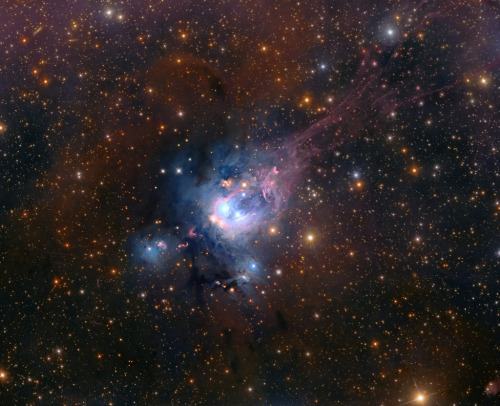
NGC 7129




November 14, 1969 – Thirty-six-and-a-half seconds after the launch of Apollo 12, the space vehicle triggered a lightning discharge through itself and down to the earth through the Saturn’s ionized plume. Protective circuits on the fuel cells in the Service Module falsely detected overloads and took all the fuel cells offline, as well as much of the Command/Service Module instrumentation. At 52 seconds after liftoff, a second strike knocked out the “8-ball” attitude indicator. The telemetry stream at Mission Control was garble, but Apollo 12 continued to fly correctly. The strikes had not affected the Saturn V rocket’s Instrument Unit.
000:09:02 Conrad (onboard): I think we got hit by lightning.
000:09:04 Gordon Bean (onboard): I do, too.
000:09:06 Gordon (onboard): Something took care of those panels, I’ll say that for it.
Pete Conrad from the 1969 technical debrief: “Because I could see outside, I made the comment to them several times. I told the ground that I thought we had been hit by lightning. I was the only one that had any outside indications. Dick didn’t note anything over his little hole in his center window. I was the only one who noticed anything and that was only the first time. I was aware that something external to the spacecraft had happened. I had the decided impression that I not only saw it, but felt it and heard it.”
Alan Bean from the 1969 technical debrief: “I knew we had power, so I didn’t want to make any changes. I figured we could fly into orbit just like that and that’s exactly what we did. The ground came up a little later and said to put the fuel cells back on the line. I was a little hesitant about doing that, because I didn’t understand that we had been hit by lightning. I gave it a go and, sure enough, things started working very well after that.”
(NASA/Wikipedia/NASA)
😊
Archaeologists Discover Unknown Fortress Walls, Byzantine Gold Coin

Two unknown fortress walls and three unknown fortress towers as well as a 14th century Byzantine gold coin have been discovered by archaeologists during the 2016 excavations of the major medieval fortress of Rusocastro in today’s Southeast Bulgaria.
The Rusocastro Fortress is best known for the Battle of Rusocastro in 1332 AD. It was the last big military victory of the medieval Bulgarian Empire before it was conquered by the invading Ottoman Turks at the end of the 14th century.
It was also the last major battle of the seven-century-long Bulgarian-Byzantine Wars for domination of the Balkan Peninsula (lasting from the 7th until the 14th century), which ended when, weakened by their hostilities against one another, among other factors, Bulgaria and Byzantium were both conquered by the Ottoman Turkish invaders at the end of the 14th and the beginning of the 15th century. Read more.

2017 January 14
Stardust in the Perseus Molecular Cloud Image Credit & Copyright: Lorand Fenyes
Explanation: Clouds of stardust drift through this deep skyscape. The cosmic scene spans nearly 2 degrees across the Perseus molecular cloud some 850 light-years away. A triangle of dusty nebulae reflecting light from embedded stars is captured in the telescopic field of view. With a characteristic bluish color reflection nebula NGC 1333 is at left, vdB13 at bottom right, and rare yellowish reflection nebula vdB12 lies at the top. Stars are forming in the Perseus molecular cloud, though most are obscured at visible wavelengths by the pervasive dust. Still, hints of contrasting red emission from Herbig-Haro objects, the jets and shocked glowing gas emanating from recently formed stars, are evident in NGC 1333. At the estimated distance of the molecular cloud, legs of the triangle formed by the reflection nebulae would be about 20 light-years long.
∞ Source: apod.nasa.gov/apod/ap170114.html
😆
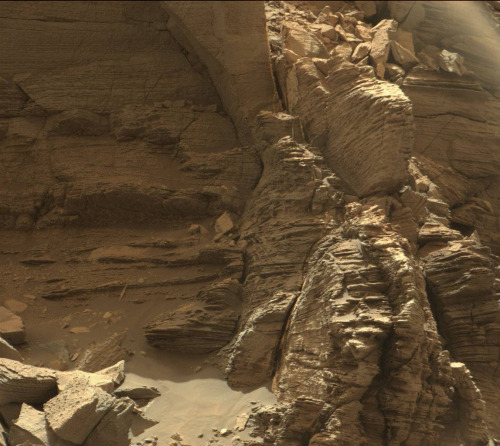
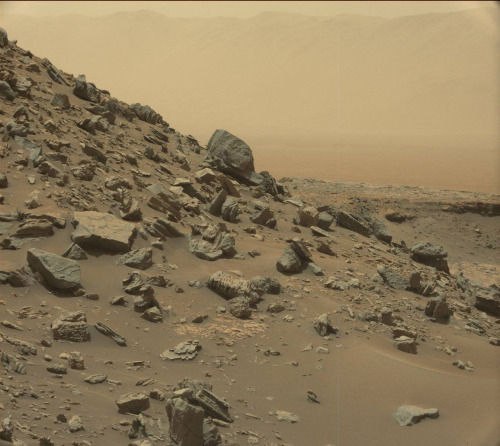
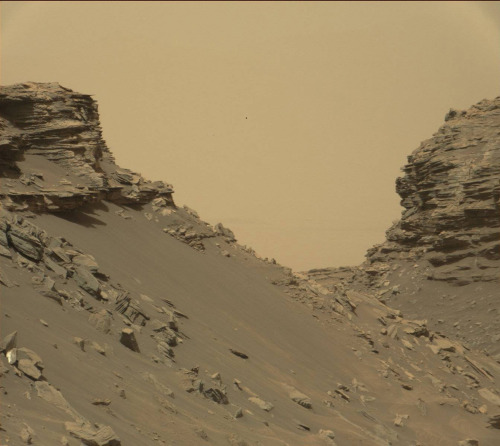
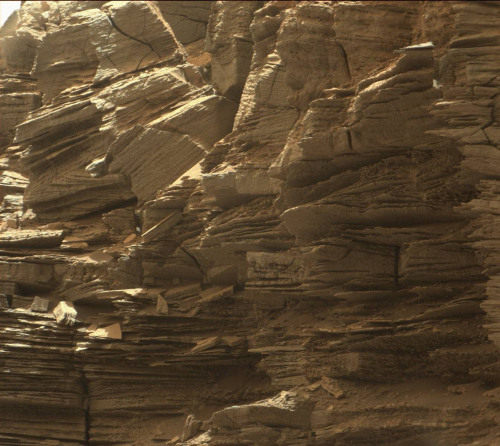
😕😕😆

Massive Galaxy Cluster
-
 suncloudess reblogged this · 3 years ago
suncloudess reblogged this · 3 years ago -
 beautifulchaosallacross reblogged this · 5 years ago
beautifulchaosallacross reblogged this · 5 years ago -
 lexxhearts liked this · 5 years ago
lexxhearts liked this · 5 years ago -
 xnzda reblogged this · 5 years ago
xnzda reblogged this · 5 years ago -
 nctzarchive liked this · 6 years ago
nctzarchive liked this · 6 years ago -
 fallenphoenix liked this · 6 years ago
fallenphoenix liked this · 6 years ago -
 analgesicsleep reblogged this · 6 years ago
analgesicsleep reblogged this · 6 years ago -
 museofspace-221b-baker-st-t-blog reblogged this · 7 years ago
museofspace-221b-baker-st-t-blog reblogged this · 7 years ago -
 annad58 liked this · 7 years ago
annad58 liked this · 7 years ago -
 bibliophilea liked this · 7 years ago
bibliophilea liked this · 7 years ago -
 mercurysowntwenty-two liked this · 7 years ago
mercurysowntwenty-two liked this · 7 years ago -
 analgesicsleep reblogged this · 7 years ago
analgesicsleep reblogged this · 7 years ago -
 liptonrm reblogged this · 7 years ago
liptonrm reblogged this · 7 years ago -
 glitchtechscience reblogged this · 7 years ago
glitchtechscience reblogged this · 7 years ago -
 cozmicclockwork liked this · 7 years ago
cozmicclockwork liked this · 7 years ago -
 dinosaurdame liked this · 7 years ago
dinosaurdame liked this · 7 years ago -
 mckitterick reblogged this · 7 years ago
mckitterick reblogged this · 7 years ago -
 steffirah reblogged this · 7 years ago
steffirah reblogged this · 7 years ago -
 steffirah liked this · 7 years ago
steffirah liked this · 7 years ago -
 drawn-apart liked this · 7 years ago
drawn-apart liked this · 7 years ago -
 musicsoundsbetterthanyourvoice liked this · 7 years ago
musicsoundsbetterthanyourvoice liked this · 7 years ago -
 sunreep reblogged this · 7 years ago
sunreep reblogged this · 7 years ago -
 selachiihook liked this · 7 years ago
selachiihook liked this · 7 years ago -
 herokind-archive reblogged this · 7 years ago
herokind-archive reblogged this · 7 years ago -
 nomaian reblogged this · 7 years ago
nomaian reblogged this · 7 years ago -
 pachimew reblogged this · 7 years ago
pachimew reblogged this · 7 years ago